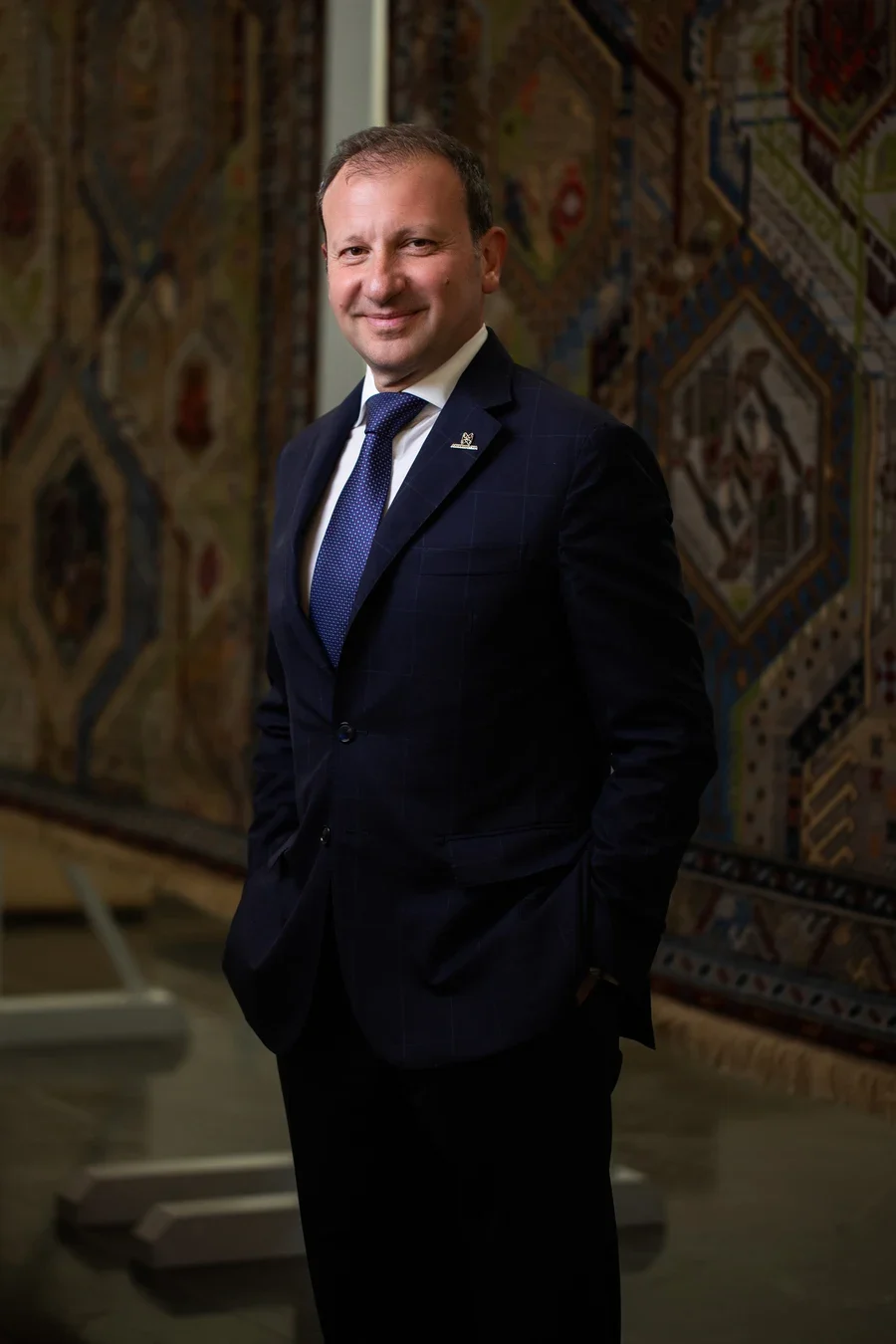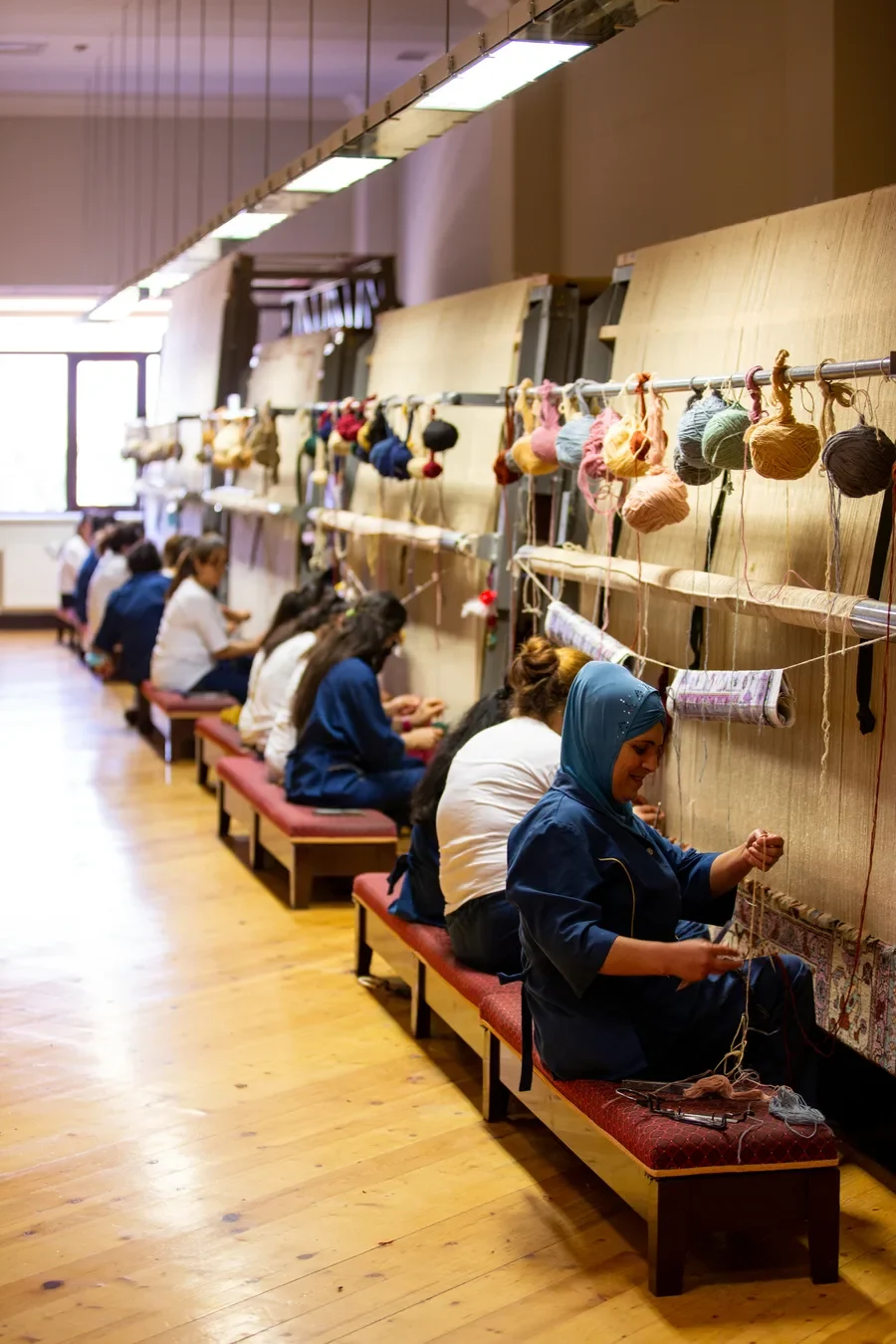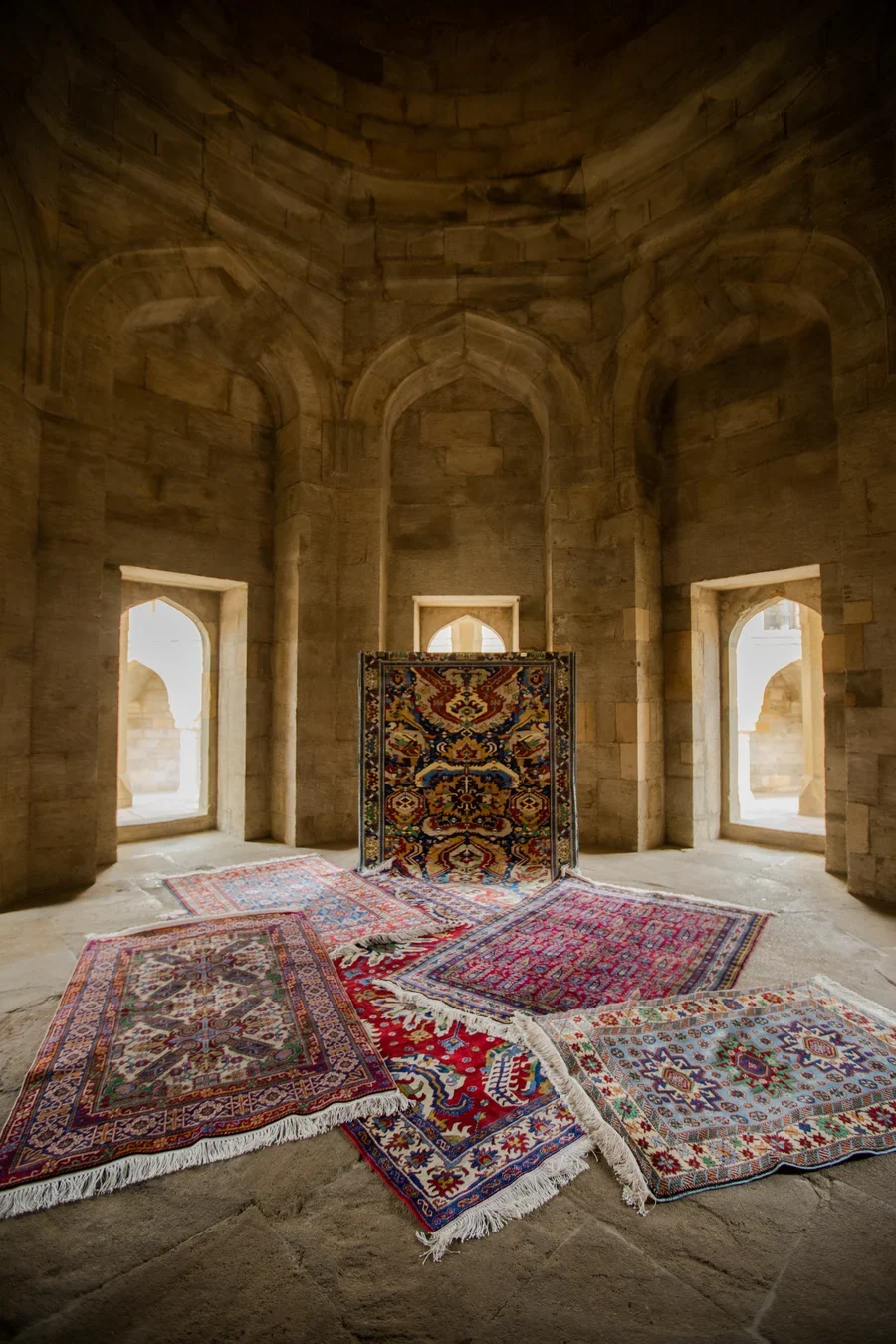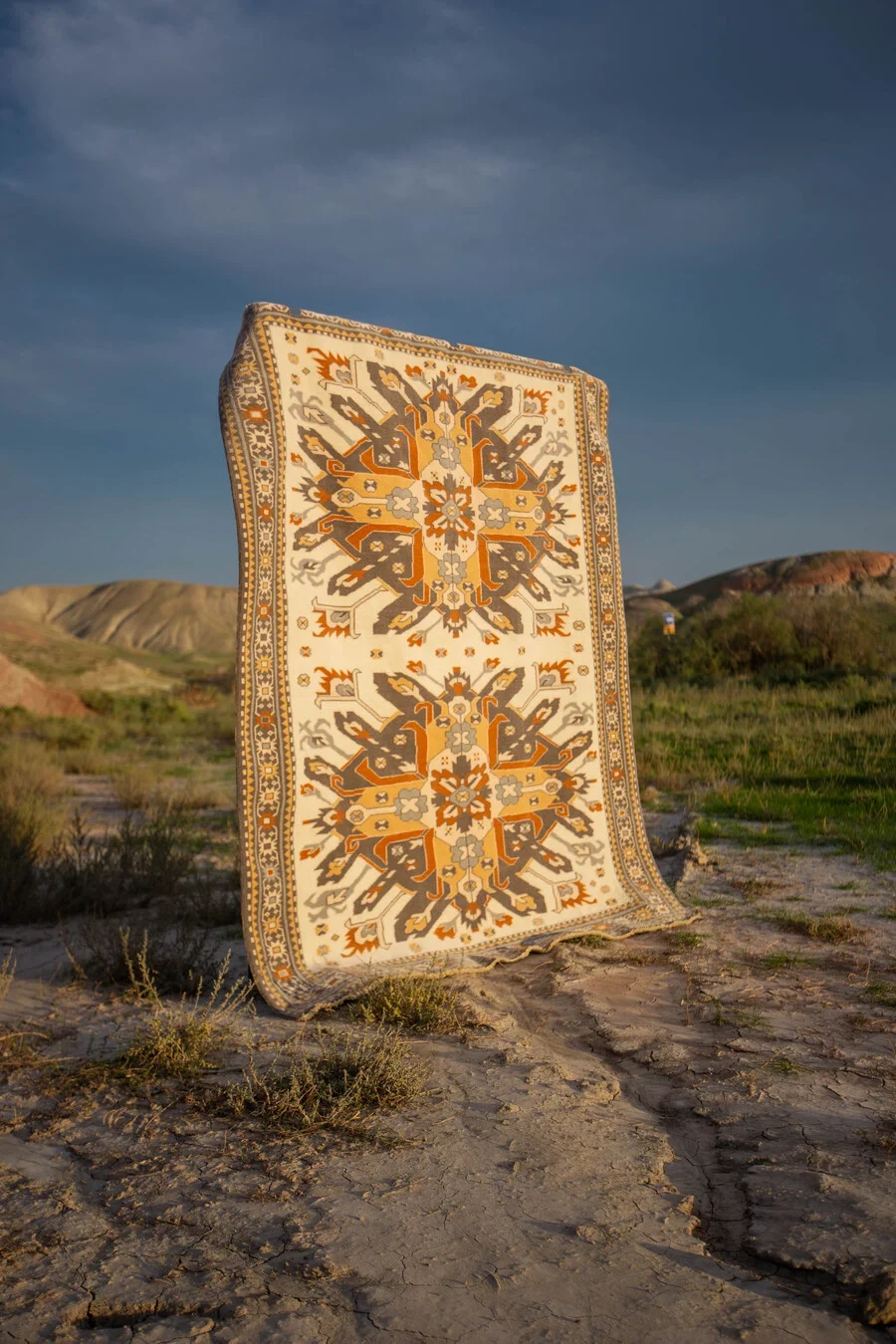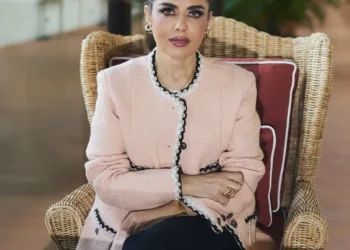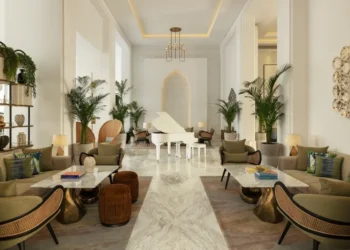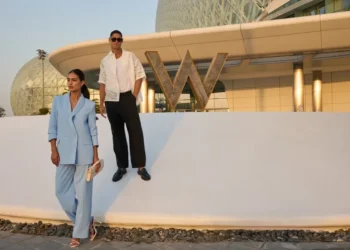COULD YOU SHARE WITH US WHAT INITIALLY INSPIRED YOUR DEDICATION TO PRESERVING AND DEVELOPING AZERBAIJAN’S CARPET WEAVING TRADITION?
Azerbaijani carpets transcend the category of decorative art; they embody the collective memory, spiritual depth, and creative genius of our people. From an early age, I understood that every knot is not merely a technical gesture but a vessel of meaning, encoding ancient symbols, ancestral voices, and the rhythm of everyday life. My dedication arises from a conviction that this cultural language must be safeguarded as part of humanity’s shared heritage. To me, carpet weaving is not a relic of the past but a living, evolving art form that has the capacity to speak powerfully to the present and the future. By ensuring its continuity, we affirm our identity while also offering it as a contribution to the global cultural dialogue.
HOW HAS AZERKHALCHA OJSC CONTRIBUTED TO THE REVIVAL OF THE CARPET INDUSTRY, ESPECIALLY IN RURAL REGIONS OF AZERBAIJAN?
Our vision has always been to weave tradition and progress together. Azerkhalcha has established a network of contemporary weaving studios across rural Azerbaijan, enabling artisans to remain rooted in their communities while engaging in a practice that is both economically viable and culturally meaningful. In doing so, we have not only revitalized a craft that was in danger of decline but also restored dignity, pride, and intergenerational continuity to regions long regarded as custodians of this art. This effort is as much about cultural preservation as it is about social sustainability, empowering women, strengthening local economies, and ensuring that carpet weaving continues to flourish as a living heritage, deeply anchored in the cultural landscape of Azerbaijan yet resonant on the world stage.
WHAT SPECIFIC INITIATIVES HAVE YOU IMPLEMENTED TO EMPOWER LOCAL ARTISANS AND ENSURE THEIR CRAFTS REMAIN VIABLE IN TODAY’S MARKET?
We focus on three key pillars: training, technology, and market access. First, we have implemented professional training programs to pass on traditional techniques to younger generations. Second, we have integrated quality control systems and modern tools to enhance efficiency while preserving authenticity. Lastly, we have established marketing channels, both locally and internationally, ensuring that artisans are connected to appreciative buyers for their work.
CAN YOU DESCRIBE SOME OF THE MOST SIGNIFICANT CHALLENGES FACED IN MODERNIZING TRADITIONAL CARPET- MAKING TECHNIQUES WITHOUT COMPROMISING THEIR CULTURAL AUTHENTICITY?
The central challenge is one of balance. Tradition carries the soul of Azerbaijani carpet weaving, while innovation is the key to its relevance in contemporary society. Our approach is to ensure that every new process, material, or design is introduced in dialogue with the masters- those who are the living archives of this tradition. By embedding their wisdom in each decision, we ensure that modernization becomes a respectful evolution rather than a rupture. In this way, innovation does not overshadow authenticity but serves as a bridge that allows our carpets to remain both timeless and timely.
HOW HAS THE RURAL CARPET WEAVING COMMUNITY CHANGED OVER THE PAST DECADE UNDER YOUR LEADERSHIP?
I have witnessed a remarkable transformation from a declining tradition to a thriving community. Many artisans who once had to leave their villages for work have returned to carpet weaving as a sustainable livelihood. There is also a renewed sense of dignity in this profession; young people now view carpet weaving not as a relic of the past, but as a pathway to a meaningful future.
IN YOUR OPINION, WHAT IS THE IMPORTANCE OF SAFEGUARDING TRADITIONAL CRAFTS LIKE CARPET WEAVING FOR FUTURE GENERATIONS?
Traditional crafts are cultural anchors in an age of flux. They remind us of who we are and where we come from, offering continuity in a rapidly changing world. A carpet is not just an object; it is a chronicle in knots, a living testimony of ancestors’ creativity. By safeguarding this heritage, we are not merely preserving beauty, we are ensuring that future generations inherit a tangible sense of belonging. When a child sees an Azerbaijani carpet decades from now, I want them to feel that same resonance: that their roots speak through it, across time.
CAN YOU SHARE A MEMORABLE SUCCESS STORY RELATED TO THE REVITALIZATION EFFORTS IN A RURAL COMMUNITY?
First and foremost, the uniqueness of Azerkhalcha lies in its mission to support and preserve Azerbaijani cultural heritage. Just as our weavers are exclusively women, our distinctiveness also stems from the fact that we operate not in one single region, but across many parts of the country. Today, we run 14 workshops across Azerbaijan, employing more than 550 weavers which makes 85% of the total number of Azerkhalcha team. We provide educational programs for women weavers in the regions and ensure their daily transportation. Every morning, our buses bring them from their villages to the workshops and return them home in the evening. This is one of the unique ways in which Azerkhalcha empowers women living in remote villages. At the same time, for those on maternity leave or unable to leave their homes for various reasons, we deliver looms and equipment directly to their houses, supplying them with raw materials and yarns. A dedicated supervisor regularly visits to oversee the process, enabling these women to work and earn an income without leaving home. Through these initiatives, we not only safeguard and continue centuries-old traditions using exclusively natural, locally sourced Azerbaijani materials, but also ensure that carpet weaving keeps pace with global artistic developments. By collaborating with contemporary artists, we create innovative carpets that breathe new life into this ancient craft and open new horizons for its future.
LOOKING AHEAD, WHAT ARE YOUR FUTURE PLANS FOR AZERKHALCHA AND THE BROADER CARPET INDUSTRY IN AZERBAIJAN?
Our vision is to strengthen the global identity of Azerbaijani carpets as emblems of artistry, authenticity, and luxury. This includes expanding educational programs to train new generations of weavers, fostering innovation in design while rooted in tradition, and creating deeper synergies with architecture and contemporary art worldwide. I imagine a future where Azerbaijani carpets are spoken of in the same breath as Swiss timepieces or Italian leather, synonymous with excellence and cultural prestige.
WHAT MESSAGE WOULD YOU LIKE TO CONVEY TO YOUNG ARTISANS AND ENTREPRENEURS ASPIRING TO CONTRIBUTE TO AZERBAIJAN’S CULTURAL HERITAGE THROUGH CRAFTS LIKE CARPET WEAVING?
I would tell them: tradition is not a burden, it is a foundation. Be proud of the roots that ground you, but be fearless in your vision of the future. If you respect heritage while innovating with purpose, your work will transcend borders and generations. In every knot you tie, you are not only making a carpet, you are weaving a story of Azerbaijan into the fabric of the world.




























